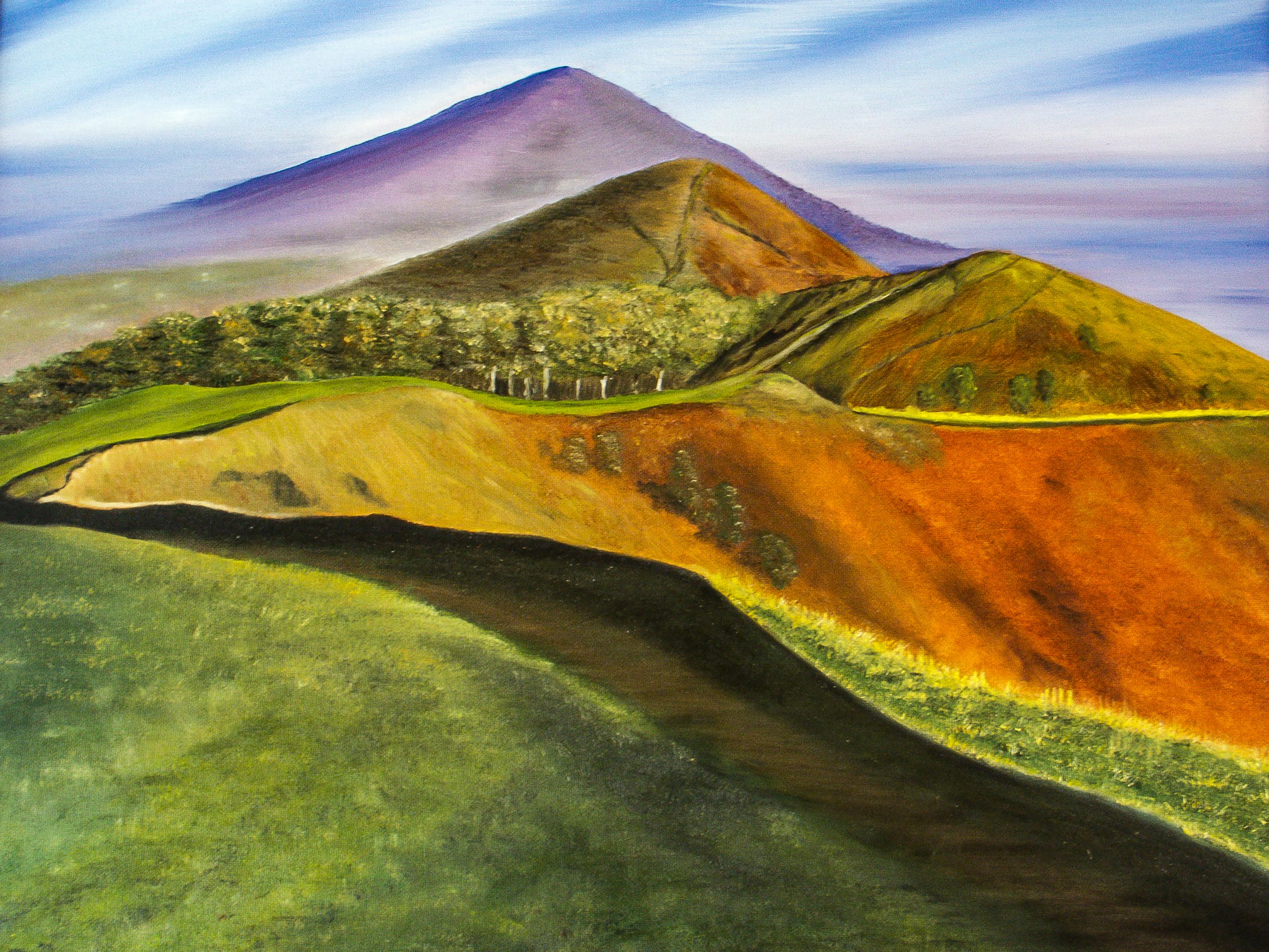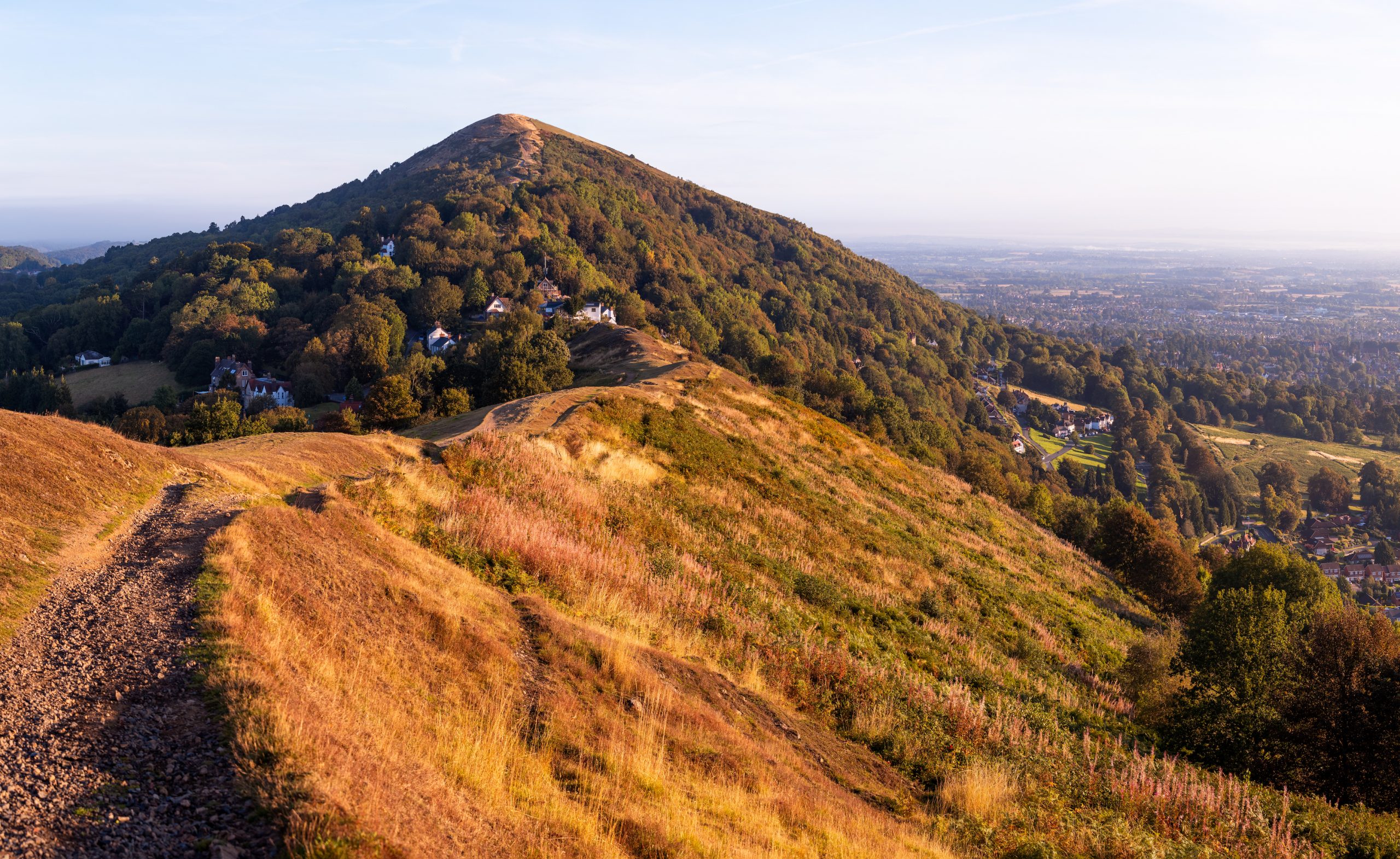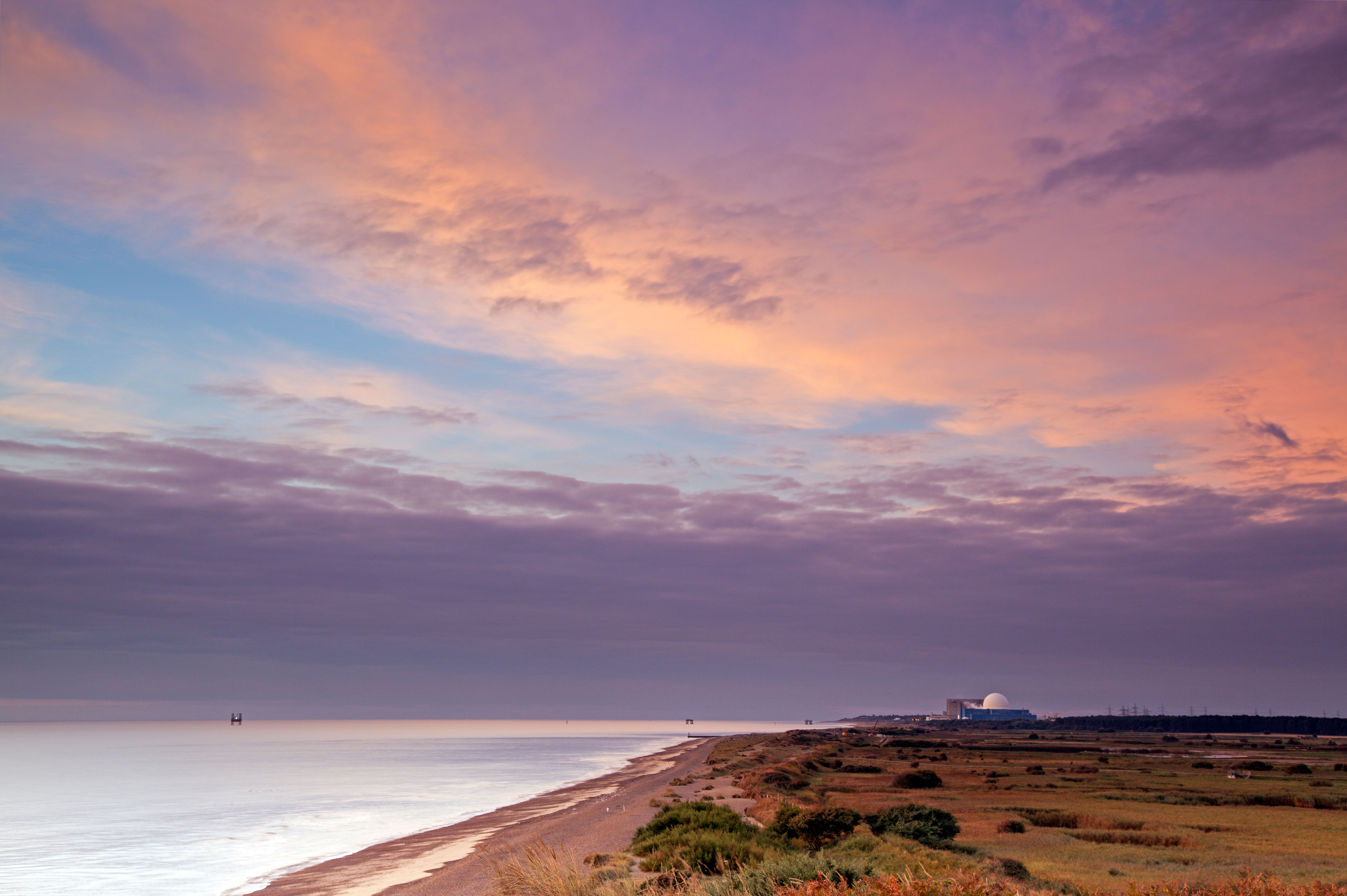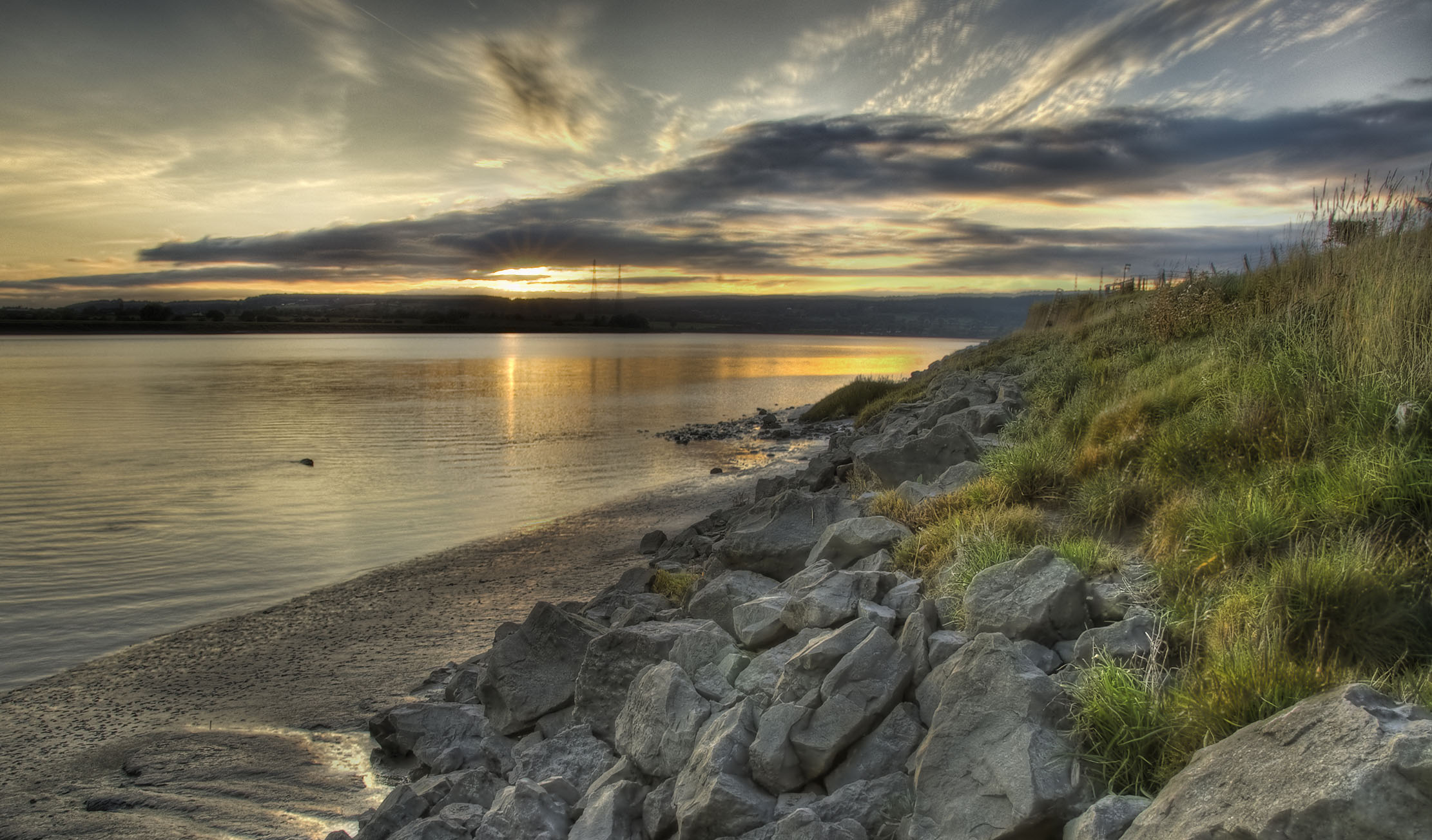Fiona Reynolds: 'In bright sunshine and strong wind, it’s exhilarating to look down on the roofs of Great Malvern''
Elgar’s music resonates all over the Malverns as Fiona Reynolds revels in a walk to the Worcestershire Beacon.


With Elgar’s Serenade for Strings soaring through my headphones, my heart throbbing with emotion and effort, I climb the steep approach to the Worcestershire Beacon. It’s the highest point of the Malvern Hills and it’s blowing a gale. It’s been a gloomy, chilly morning, but suddenly there’s blue sky against the trig point and my black lab Ruskin (a puppy no longer) bounds to the top and poses.
I love hills and, having been deprived of summits through lockdown, I pick those nearest to me and set off for an end-to-end walk of the Malvern Hills. In fact, it’s end-to-end-to-end, because, walking alone, I have to do both ways. The makes me cheat slightly and I start from Hollybush, not quite at the southern end, then go to North End and back.
This is an ancient landscape. The hills are volcanic and form a sharp, distinctive feature. Small wonder that, from earliest times, they have been strategically important. Shire Ditch, a Bronze Age earthwork, runs the length of the hills and British Camp is an extraordinary Iron Age hill fort, its rows of concentric ditches like a giant wedding cake.
We stop for a breather and to drink in the sublime view
The area was from medieval times a Royal Forest, protected from enclosure, and, in 1884, Parliament established the Malvern Hill Conservators. Today, it’s an AONB and still looked after by the (renamed) Malvern Hills Trust.
There is evidence of active conservation work: a small herd of melting-eyed Highland and Belted Galloway cattle; new fencing to manage grazing and much work to keep the footpaths in order. This is necessary, for the hills are popular. There are lots of people out and I’m greeted by cheery hellos (many, I must admit, for Ruskin) along my route.
The first stretch, to the British Camp car park, is the quietest. I walk around Mid-summer Hill and up to the camp, striking up from the Three Choirs Way. North of British Camp, I keep to the west side of the hills, swinging along as I watch people pull up to the summits: Black, Pinnacle, Jubilee and Perseverance Hills.

Then down again and up Worcestershire Beacon, now on the ridgeline and with Elgar to accompany me. In bright sunshine and strong wind, it’s exhilarating to look down on the roofs of Great Malvern.
Sign up for the Country Life Newsletter
Exquisite houses, the beauty of Nature, and how to get the most from your life, straight to your inbox.
North of Worcestershire Beacon is a green maze of gentle mounds around North Hill, through which I pass to reach End Hill and the precipitous slope above North Malvern. We’ve done nine miles, so we stop for a breather and to drink in the sublime view.
On the return leg, I try to avoid treading the same paths and mostly succeed, so rich in routes is this landscape. I stick to the ridge and I’m glad, because the views are spectacular. Soon after Black Hill, I detour to St Wulstan’s Catholic Church. I adore Elgar’s music, so it’s moving to see the place where he’s buried, in the countryside he loved, together with his wife, Alice.
I take the low road for a while, via Little Malvern’s lovely priory and back over Swinyard Hill and Midsummer Fort. After 18 miles, Ruskin and I are a little weary, but fortified by hills, music and great walking.

Fiona Reynolds: A walk on the Suffolk coast that brings home the true horror of the new plans for Sizewell
A few months after writing about a development at Otmoor, Fiona Reynolds visits the beautiful Suffolk coast — and can't

Fiona Reynolds: 'The day wears to a close, satisfied by a long walk and new discoveries close to home'
Fiona Reynolds recounts a pre-lockdown tale of a walk along the banks of the River Frome to where it meets
Fiona Reynolds is chair of the Food, Farming and Countryside Commission, the former director-general of the National Trust, former Master of Emmanuel College, Cambridge, and the author of The Fight for Beauty. Follow her on Twitter @fionacreynolds.
-
 How an app can make you fall in love with nature, with Melissa Harrison
How an app can make you fall in love with nature, with Melissa HarrisonThe novelist, children's author and nature writer Melissa Harrison joins the podcast to talk about her love of the natural world and her new app, Encounter.
By James Fisher
-
 'There is nothing like it on this side of Arcadia': Hampshire's Grange Festival is making radical changes ahead of the 2025 country-house opera season
'There is nothing like it on this side of Arcadia': Hampshire's Grange Festival is making radical changes ahead of the 2025 country-house opera seasonBy Annunciata Elwes